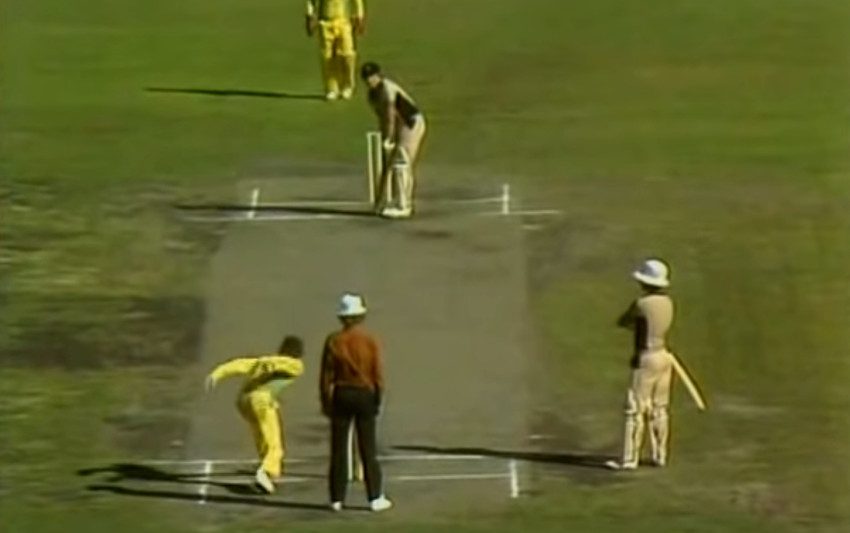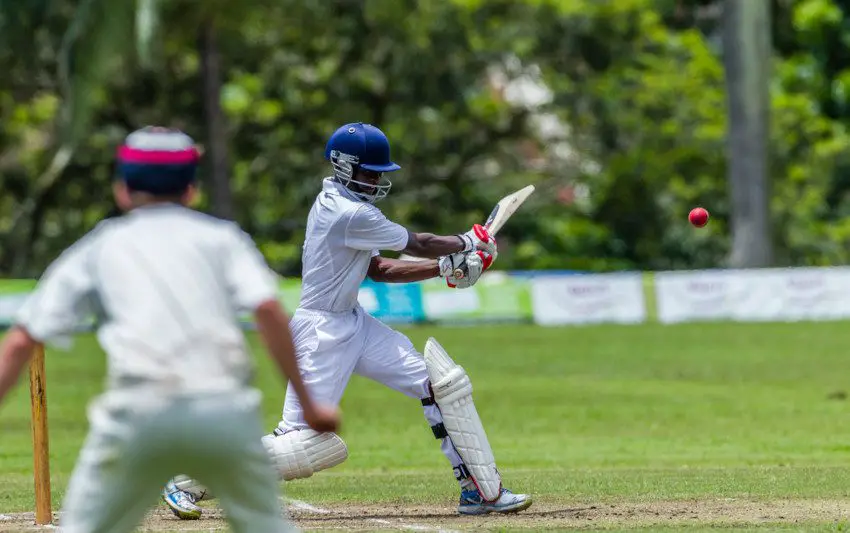Table of Contents
It’s part of the game that has died out but, from a historical point of view, it’s interesting to take a look at underarm bowling.
What is Underarm Bowling?
Underarm bowling is a style of bowling in cricket. Instead of delivering the ball with a round arm action, the ball would be released with the hand still below the waist.
The process is similar to that of releasing a ball in bowls and it was common practise at one time.

History of Underarm Bowling
While documentation is scarce, it’s generally accepted that bowling in cricket started with underarm actions. Illustrations also suggest that the ball was rolled, or skimmed along the ground.
Bowlers would vary their pace, but there was nothing in the way of swing or seam at that time.
Like all sports, cricket continued to evolve but underarm bowling would dominate for some time yet. The first real change came in the 1760s when bowlers started to regularly pitch the ball, as opposed to rolling it or skimming it along the ground.
It’s felt that cricket really began to develop from this point. Bowlers could introduce new skills such as spin and it was something of a revolution. Lob bowling was also used where bowlers would send the ball high into the air. This type of bowling is actually very hard to hit and that ball would sometimes even land directly onto the stumps.
Of course, the game has moved on and it’s unthinkable that anyone would want to bowl underarm these days. However, as we go back through history, we can see that evolution in practise.
In the Modern Day
By the early 1900s, overarm bowling had been fully developed for some time. Underarm bowling had essentially died out apart from a very few isolated incidents. Those who played with former England captain Mike Brearley of Middlesex talk about the time that he employed some lob bowling in an attempt to get a wicket.
There are other cases too but they were very rare. In general, it was seen as a last ditch defensive tactic in order to keep the runs down. On other occasions, underarm bowling has been used as a protest when it was perceived that the batting side were taking too long.
Eventually, all forms of underarm bowling were banned in 2000. Nowadays, it can only be used in special circumstances if the two captains agree but it’s hard to imagine a scenario where this would happen.
On one of those occasions where underarm bowling was used defensively, it caused one of the biggest incidents of controversy in the history of the game.
Underarm Bowling Incident of 1981
An incident between Australia and New Zealand in a 1981 One Day International caused great controversy at the time and it’s still talked about to this day. The match took place at the Melbourne Cricket Ground and was the third game in a best of five final.
That series was tied at 1-1 and Australia had set a total of 235/4 in the third game. In reply, the Kiwis had made 229/8 heading into the final delivery of the match.
With New Zealand needing six to tie, Aussie captain Greg Chappell instructed the bowler – his younger brother Trevor Chappell – to roll the ball along the ground with an underarm action. This was perfectly legal in Australia at the time, but it was widely condemned as being against the spirit of the game.
New Zealand’s batsman Brian McKechnie blocked the ball, before throwing his bat away in disgust, which rather summed up the general feeling at the time.
Australian players, most notably wicket keeper Rod Marsh, showed visible dissent before the ball was bowled. The repercussions continued in one of the most infamous occasions where the spirit of cricket was blatantly broken.
Conclusion
It’s now an interesting footnote in history but underarm bowling was once a huge part of cricket. By looking at it in this context, we can understand a bit more as to how the sport developed.
It’s also strange to note that it took so long for the cricketing authorities to outlaw the practise. Following that infamous incident in 1981, I would have expected legislation to come in before it eventually arrived in 2000.
And it’s a good thing that it has been banned. It’s not often that Australians are embarrassed by what they do on the cricket field, but that underarm delivery in 1981 is never going to be repeated and that can only be positive.


